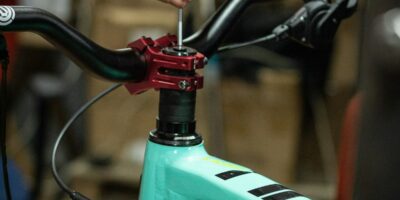
Exploring the Essential Elements Used in Bicycles
Bicycles are marvels of engineering. Each component plays a crucial role in their functionality and efficiency. Let’s break down these elements to understand what makes a bicycle tick.
Frame
The frame is the backbone of a bicycle. It is primarily constructed from materials like steel, aluminum, carbon fiber, or titanium. Steel is known for its strength and durability. Aluminum is lightweight and resistant to rust. Carbon fiber offers a lightweight yet strong option, often favored in competitive cycling. Titanium is both light and extremely durable, though often more expensive. The choice of material affects the bike’s weight, durability, and price.
Wheels
Wheels consist of rims, spokes, and hubs. Aluminum rims are common due to their light weight and resistance to rust. Spokes can be made of stainless steel or carbon, with the number of spokes affecting both strength and weight. The hub, typically made of aluminum or steel, houses the axle and bearings. Together, these components impact the ride quality and performance of the bicycle.
Tires
Tires are crucial for traction and comfort. They are made of rubber compounds that cater to different terrains and conditions. Racing bikes use slick or lightly treaded tires for speed. Mountain bikes have knobby tires for off-road traction. Commuter bikes often have puncture-resistant tires for urban environments. Tire width, tread pattern, and pressure affect the bicycle’s handling.
Brakes
Braking systems include rim brakes and disc brakes. Rim brakes use rubber pads that grip the wheel rim. They are lightweight and easy to maintain. Disc brakes can be mechanical or hydraulic. Mechanical disc brakes are cable-operated, while hydraulic ones use fluid for operation. Disc brakes provide stronger stopping power, especially in wet conditions.
Derailleurs
Derailleurs manage gear shifting. Front derailleurs handle chain movement between the front chainrings. Rear derailleurs shift the chain across the back sprockets. They are typically made of lightweight aluminum and precision springs. Smooth shifting is vital for maintaining speed and efficiency on varied terrain.
Chain
The chain transfers power from pedals to wheels. It is usually made of steel for durability and strength. Chains vary in size, depending on the number of gears. Regular cleaning and lubrication prevent wear and improve longevity. Chains require precise tension for optimal performance.
Pedals and Crankset
Pedals are your bike’s connection to you. They come in platform or clipless styles. Platform pedals are simple and versatile. Clipless pedals require special shoes to clip in, providing more efficient power transfer. The crankset converts pedal motion into rotational force for the chain. Crank arms are typically crafted from aluminum or carbon fiber for lightweight durability.
Saddle
The saddle supports the rider. Saddles come in various shapes and sizes to suit different preferences and riding styles. Materials include heavy-duty leather, lightweight synthetic, or gel padding. Adjusting saddle height and angle is critical for comfort and efficiency.
Handlebars and Stem
Handlebars steer the bike and support various riding positions. Types include drop, flat, and riser bars. Drop bars are common on road bikes for aerodynamic positioning. Flat bars offer a comfortable grip and control, often seen on mountain bikes. The stem connects handlebars to the steerer tube, playing a key role in handling and stability.
Suspension
Suspension systems absorb shocks from uneven surfaces. Found mostly on mountain bikes, they enhance comfort and control. Fork suspension cushions the front wheel impact, while full suspension includes a rear shock absorber. The suspension’s settings—such as travel and damping—adjust based on rider preference and terrain.
Headset and Fork
The headset is a set of bearings allowing the fork to rotate within the frame head tube. It ensures smooth steering. It may be threadless for modern designs or threaded in older models. Forks are straight or suspension-equipped, affecting handling and ride comfort.
Bottom Bracket
The bottom bracket connects the crankset to the bicycle and enables the cranks to rotate. It houses bearings and is integral to pedaling efficiency. Options include threaded or press-fit types. Material choices, like steel or ceramic bearings, influence how smoothly the pedals turn.
Hubs
Hubs form the center of the wheel and house bearings allowing wheel rotation. They connect to the bike’s axle. Rear hubs often include freehub body—integral for the bike’s gearing system. Materials include aluminum and steel, affecting weight and durability. Maintenance is essential for smooth wheel spinning.
Cables and Housing
Cables control brakes and derailleurs, running through housing to reduce friction. Made from stainless steel, cables need regular inspection and maintenance. Housings are typically plastic or metal, offering protection and guidance for cable function.
Accessories
- Lights enhance visibility and safety in low-light conditions.
- Fenders protect from road spray and debris.
- Bags and racks expand cargo-carrying capacity.
- Bells and mirrors improve safety awareness.
Bicycles blend simplicity with innovation. Understanding these elements empowers both new riders and seasoned cyclists to maximize performance and enjoyment. Whether you’re commuting, mountain biking, or road racing, knowing your bicycle’s components helps tailor your ride to your needs.
Recommended Cycling Gear
Garmin Edge 1040 GPS Bike Computer – $549.00
Premium GPS with advanced navigation.
Park Tool Bicycle Repair Stand – $259.95
Professional-grade home mechanic stand.
As an Amazon Associate, we earn from qualifying purchases.




Subscribe for Updates
Get the latest articles delivered to your inbox.
We respect your privacy. Unsubscribe anytime.